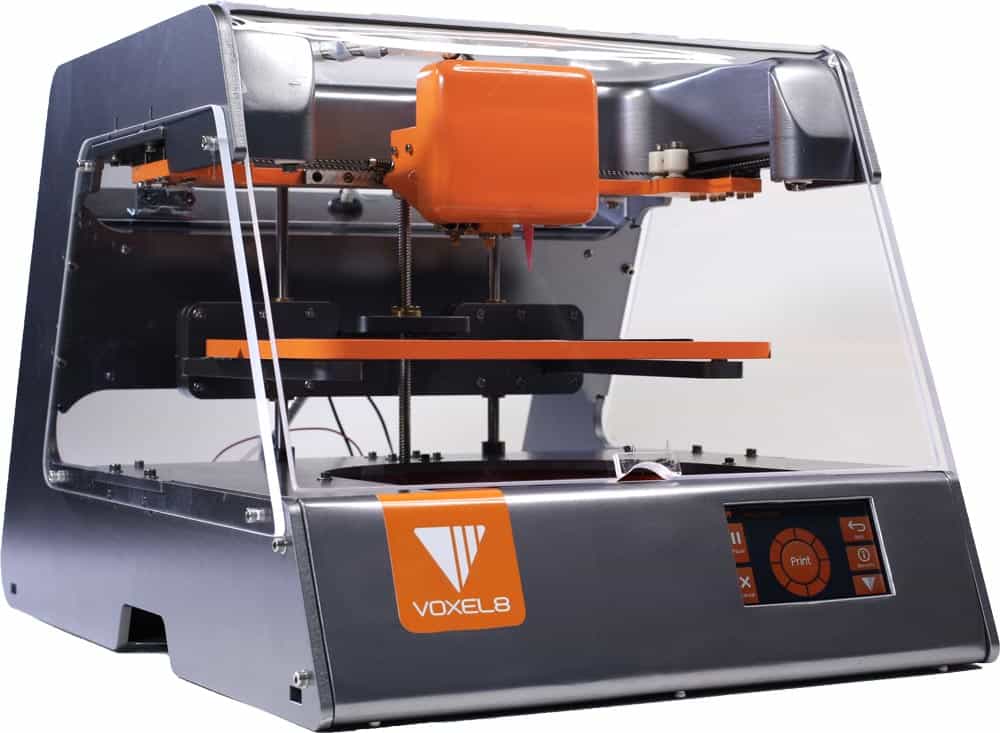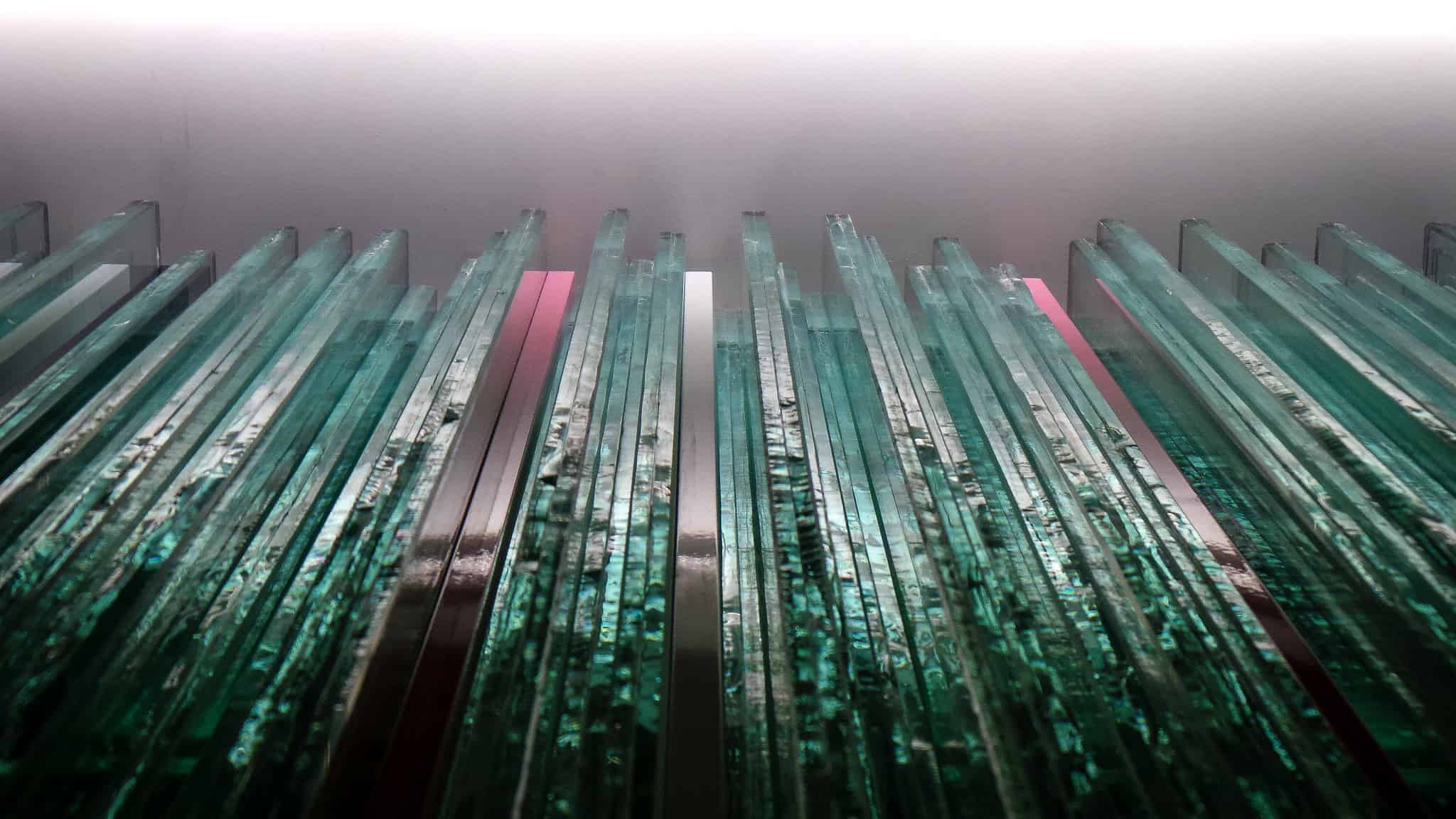 I, like many of you, have haphazardly (perhaps lazily) been watching the 3D printing genie emerge from it’s lamp. Since I saw my first 3D printer in Make: magazine I’ve been excited by their potential and curious of their evolution. Things seem to be getting more and more exciting. Today I am convinced that we are witnessing the beginning of a 3D printing revolution. Let’s take a look at what’s new, why 3D printing matters to you, and what might be next for this 3D printing revolution:
I, like many of you, have haphazardly (perhaps lazily) been watching the 3D printing genie emerge from it’s lamp. Since I saw my first 3D printer in Make: magazine I’ve been excited by their potential and curious of their evolution. Things seem to be getting more and more exciting. Today I am convinced that we are witnessing the beginning of a 3D printing revolution. Let’s take a look at what’s new, why 3D printing matters to you, and what might be next for this 3D printing revolution:
What’s New in 3D Printing
Right off the bat, let’s jump to China, where construction company Winsun unveiled a 3D printed 3-story mansion and a 3D printed 5-story apartment building! You read that right, they’re 3D-printing concrete architectural components and building fairly massive structures with them. Don’t believe me? Check out the pictures below and read more about it here. Then think about building 10 eco-friendly homes in a day.
[rev_slider 3d-buildings]BIG is cool, and I haven’t seen anything bigger than an apartment building come out of a 3D printer yet. But maybe practical is cool too. In the realm of the pragmatic, being able to 3D print useable parts (vs. just models / prototypes) is definitely cool!
MarkForged made an impact at CES 2015 with their Mark One 3D printer. Using a combination of nylon filament and strips of either carbon fiber, kevlar, or fiberglass, the machine crosses a major threshold in 3D printing: Fully functional parts. The printed parts are reportedly better than 6061 aluminum when it comes to strength-to-weight ratios. Think: Your mechanic prints a formerly irreplaceable part needed for your vintage car, on the spot, for less than the cost of the part if it had been available. For more, read Mike Senese’s take from their debut at this years CES here. Better yet, check out his video that walks us through a couple potential uses for this technology as well as some explanation and demonstration of the process (good solid 3D printing porn):
The MarkForged Mark One is available now for about $5,500 – even if you can’t afford it, go drool over the photos.
What’s cooler than 3D printing functional parts? 3D printing complete devices, of course! OK. We’re not quite there yet. But we did get a very cool sign of things to come from Voxel8, a company using materials technology from the Lewis Group at Harvard University to begin 3D printing electronics. Similar to the Mark One, Voxel8’s 3D printer uses two individual heads to do its work. In this case, one is for thermoplastics/matrix materials (the structure of the printed object) and one is for conductive inks, which form the circuitry (the wires) within the device being printed. The reason I said “not quite” above is that today the user must insert the needed electronic components by hand (check the video to see what I mean). Even so, this marks a notable step forward in 3D printing: A very cool device that can actually print fully functioning electronic devices! As they continue to develop the use of new materials, we may eventually be able to print batteries, resistors, even entire electronic devices! Check out Voxel8’s marketing video if you haven’t yet. It blew my mind a bit the first time I watched it (moving beyond a 2D manufacturing paradigm, truly integral design, etc.):
The Voxel8 3D printer is set to be available in late 2015. Pre-orders are open now for about $9k (min. $500 dep.).
Why 3d Printing Matters to You
We’ve talked a lot about these cool new 3D printers, and the cool stuff being printed with them, but is this just “cool” or is there more to 3D printing? In other words: Why should you care about 3D printing?
I think my girlfriend hit the nail on the head when we were discussing some of these advancements just the other day. As I was describing the future potential of these devices, and the idea of widespread in-home manufacturing, she very astutely asked: “If I can 3D print a fully functional and aesthetically appealing remote control car at home, what happens to the toy manufacturers?” What indeed…
The 3D Printing Revolution
I responded to her question with one of my own, “What happened to record labels and book publishers when the Internet made digital works available for nearly nothing?”
This sentiment, I think, cuts to the core of what’s truly exciting about this 3D printing revolution. It’s what makes it a revolution at all.
For tens of thousands of years, human beings had to kill, capture, or create everything they needed to survive, mostly themselves. From the oft-referred to “cave man” of the distant past all the way up to people living today in the less developed portions of our planet, the supermarket and big-box store solution was (and is) simply not available. For the vast majority of our existence, humans have prepared our own meals, built our own homes, and entertained each other. The industrial revolution started shaping things about 250 years ago. Since, we’ve been reliant on factories, distant large-scale manufacturers, massive retailers, and entertainment broadcast into our homes from afar.
The Internet caused a digital revolution in industries such as map making, music and video distribution, news casting, book publishing, transportation, lodging, communication, and more. We’ve started to see a swing back to the natural order of things. Instead of being shouted at by a few select celebrities; today we are all able to create and share with our friends. We’ve gone back to telling each other stories, to singing to each other – to being both consumers and creators.
3D printing now holds the promise to bring this revolution to the world of physical objects. The 3D printing revolution is inching us closer to a world where local shops and regular folks can produce most of what they need on demand, with little to no waste. What does that world look like? In other words…
What’s Next for 3D Printing?
From what we know of technology and of people, we can infer a few things about the immediate future. If we take a few liberties as well, we can guess further out.
Price curves on this type of technology are well known to go down. It’s as simple as that. Look at personal computers, inkjet and laser printers, mobile phones and tablets, etc. Personal electronics ride Moore’s law very well. They also ride the law of supply and demand. The newest models and coolest tech always toy with our monetary sensibilities. More mature technology and older models simply crash in price. The first color laser printer, QMS’s ColorScript Laser 1000, sold for $12,499 in 1993. Two years later Apple Computer introduced their Color Laser Printer 12/600PS priced at $7,000. Today, the color laser printer sitting on my desk cost less than $500 and is quite a bit more capable. A similar curve would bring top of the line ‘desktop’ 3D printers down to around $500 in less than 10 years. I think that a sub-$1k 3D printer capable of producing fully functional parts and complete devices is truly revolutionary. When average folks are able to conveniently and cost-effectively take advantage of local and/or in-home production, industries will shift.
Here’s a few things I think will happen over the next dozen or so years, as those 3D printer prices drop:
- More flexible 3D printers will emerge. For 3D printing to be a truly viable option in folks homes, we’ll need to be able to print in many different materials from a single machine. People aren’t going to buy more than one 3D printer, so it needs to be flexible. One device for all (well, most of) your desktop manufacturing needs. This will provide the most revolutionary changes to our world. When most folks can print most of what they need at home, many things we now take for granted will change drastically, or be washed away completely.
- 3D print shops will pop up years before we see super-flexible crazy-cheap 3D printers in the majority of homes. For a while the most functional and flexible 3D printers will still be measured in thousands of dollars and multiple machines will be needed to be truly versatile. This creates an opportunity for local entrepreneurs who will jump in to provide local 3D printing services. These will likely be born out of the current maker spaces in many cases, providing 3D printing as a service (3DPaaS?) rather than just access to the machines. These 3D printing shops might serve two purposes: One is directly printing designs of the consumers request like an OfficeMax or FedEx store does today with 2D printing. The other is on-demand printing for online retailers to avoid shipping costs and delays. Forget drop-shipping; this is drop-manufacturing! Raw materials are the only needed inventory.
- More specialized 3D printers will continue to be developed for specific applications. The work being done with 3D printers that build objects from various stem cells is extremely intriguing; what if we could supply replacement organs on demand to anyone who needs one? Can we print food, like in a Star Trek replicator? What other objects, products, or even services could be revolutionized through 3D printing?
- Another area that piques my interest is 3D scanning. Today we can scan the outside of pretty much any object in high enough resolution to 3D print inert copies. I wonder, as the ability to produce fully functioning devices from a 3D printer grows and becomes more common, will we see 3D scanners that can peer into devices as well? Perhaps by using x-ray, millimeter wave, or similar technology we’ll soon be able to reverse engineer functional devices using a 3D scanner?
- 3D printed dragons!
With a little bit of imagination it’s not hard to see the outlines of what this world will look like. The ramifications for manufacturers, intellectual property holders, retail middle-men, and society in general will be sweeping. I think these changes are all pushing us in the right direction. Towards a more open and collaborative world. Imagine a world where an inventor (perhaps you) designs a new device in an app on their tablet and hours later people all over the world are 3d printing that new tool or toy, right in their own homes!
The industrial revolution got us here, and should be lauded for the progress we’ve seen in the past couple centuries. The 3D printing revolution promises to build on that success while re-introducing our more collaborative, self-sufficient nature. The Internet and it’s digital revolution is making knowledge, communication, and creativity accessible to everyone. Next, the 3D printing revolution will unlock that same access in the physical world.






